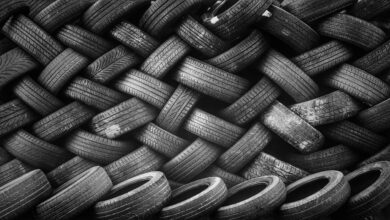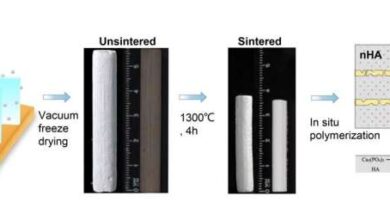Iranpolymer/ Baspar In its ‘Let’s talk about Chemical Recycling” series, the Plastics and Rubber Machinery division of the German VDMA association talks to experts and stakeholders active in the chemical recycling space. According to Matthias Scheibitz, head of Sustainability Strategy Performance Materials at BASF, ‘it takes time to develop the processes and high investments are necessary.’
Dr. Scheibitz, of all the plastic waste generated in the EU, only 0.1 per cent is being chemically recycled at present. What proportion is realistic in the medium term?
With a view to the volume flows of plastic waste in Europe, the EU’s Joint Research Center concludes that chemical recycling can increase its recycling share to up to 15 per cent by 2030 in an optimistic scenario. The share of mechanical recycling could grow to 45 per cent accordingly. Mechanical recycling would then still be three times the volume of chemical recycling. This is entirely in line with what we are aiming for at BASF, because everything that can be recycled mechanically should be recycled mechanically. In Europe, 23 percent of plastic waste currently ends up in landfills, 42 percent is used to produce energy, and about 35 percent is recycled mechanically. From our point of view, the goal must be to recycle more plastics, burn less, and transfer less to landfills. We believe that there will be further improvement in recycling processes, not only chemical processes, but also mechanical ones. The optimal result can clearly be achieved from a combination of both.
High investments are needed to ramp up chemical recycling. What framework conditions are necessary to ensure that these investments are made?
According to figures by Plastics Europe, the chemical industry plans to invest just over seven billion euros in chemical recycling by 2030. The most important factor for our industry is that a reliable legal framework will be realised because we cannot achieve this of our own accord. The key requirement is maximum openness in terms of technology. In the regulatory framework, chemical recycling must be approved for the mechanical recycling quota. If, for example, a recycled content of 30 per cent is required for packaging, chemical recycling must be approved. This will give us a sense of security that our customers can use it. It would also be helpful to introduce extended manufacturer responsibility. The manufacturer of a product, for example packaging, a car or a refrigerator, should pay a certain amount into a joint fund, from which recycling is then financed. This is especially important for us at BASF, because something along these lines does not yet exist for the so-called performance materials we supply to our core industries, i.e. the automotive industry and the construction sector.
What role does the mass balance procedure play, which politicians currently still view somewhat sceptically?
If the process is not approved, the transformation towards a functioning circular economy will become so extremely expensive that it will probably not be realised at all. We of the chemical industry can make a major contribution towards this transformation with our core competence of material conversion. However, it takes time to develop the processes and, like I said, high investments are necessary. We also want to do something now though. This is made possible by the mass balance. One major advantage is that we can use existing plants. We substitute fossil raw materials with circular raw materials, i.e. crude oil with pyrolysis oil, very early in the value chain, and then assign these to specific products. We have this process and each individual product certified by an independent body. It is utilising the same principle as is utilised for green electricity.
Why do chemical recyclers have to fight so hard for mass balance recognition?
It is a matter of trust. The new, chemical recycling processes have not been around that long, the mechanical processes are already established. Billions are already being made in mechanical recycling. Politicians view it in this manner: something actually already exists in one area, while in another, something else is promised, but is not visible to the same extent. We need to take a leap of faith.
How do you feel about the accusation that manufacturers of complex industrial plastics take input materials away from mechanical recyclers when recycling simple polyolefins?
It’s something we have to deal with. For us, it would be conceivable to create sector-specific targets, in other words: packaging has to take care of packaging, textiles have to take care of textiles. And sooner or later, the automotive industry will have to take care of its plastics. We at BASF are already looking at how we can also take care of our own materials. As an argument against the accusation of material competition, however, I always say that the mountain of waste from plastic packaging is so huge that there should be enough raw materials for everyone – plus I would once more like to emphasise that chemical recycling is meant to complement and not replace mechanical recycling.
Will the energy balance of chemical recycling improve in the foreseeable future?
It is undisputed that the energy input in mechanical recycling is lower than in chemical recycling. But we should not compare apples to oranges here. Mechanical recycling requires relatively clean material flows, and this naturally also requires a great deal of effort in terms of sorting and cleaning. Moreover, pyrolysis is a relatively energy-efficient process: the part of the waste that cannot be converted into oil is pyrolysed into gas, which is used to generate the energy required for the process. This means that less additional energy is required. In other words, the process is relatively efficient. However, it is very important that we do not stop at this current stage of course; we must continue to develop pyrolysis technology. There are a number of technology providers who work with microwaves to heat the process, for example. If you then run that process on green electricity, there would be no further emissions whatsoever at that point.
sustainableplastics







